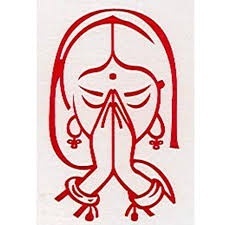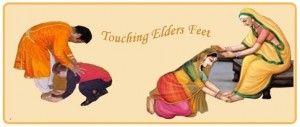
“Namaste” is made of two words, namas and te. Namas comes from the verbal root nam which means to bow and so namas is a bow or salutation. Te means, to you. And so namaste literally means, bowing to you. There is a variation of this in the form namaskara. The Sanskrit word “kara” means, doing. So namaskara literally means, doing salutations. Many Hindus say that when they do namaste they are bowing to the soul (atma) and God (paramatma) within and not to the body without. By contrast shaking hands is a gesture of respect to the body, whereas in Hinduism bowing to the soul within is considered more important. Hence, namaste is made with two hands held together at the heart where the soul is said to reside.
Why do we bow before parents and elders?

Bowing to parents, elders, or for that matter, all seniors including teachers and saintly people, is an important matter within Hinduism. Children are taught to bow to elders from an early age. Bowing is a sign of submission and a way to show respect. In addition, the act suggests the hierarchical nature of Hindu society where juniors submit to seniors. But there is still more involved. Bowing is not just bowing one’s head. To bow generally means touching the feet of seniors, and feet hold a powerful symbolism within Hindu culture. From a child’s perspective, parents, teachers and elders are considered “gods” therefore bowing to the feet of seniors is the way showing the highest respect.